

 First published in 2008 by
First published in 2008 by
Green Books
Dartington Space, Dartington Hall
Totnes, Devon TQ9 6EN
www.greenbooks.co.uk Reprinted 2008, 2009, 2010, 2011 First digital editions 2012 Bish Muir 2008-12
All rights reserved Print edition ISBN 978 1 900322 37 9
PDF format ISBN 978 0 85784 076 9
ePub format ISBN 978 0 85784 077 6 DISCLAIMER: The advice in this book is believed to be correct at the time of printing, but the authors and publishers accept no liability for actions inspired by this book. Introduction In the UK we throw away a third of the food we buy 6.7 million tonnes every year Nobody likes throwing away good food quite apart from anything else, it is a terrible waste of money, as well as very harmful to the environment. However, with a little bit of guidance and inspiration we can all cut back on the amount of food waste we produce, and work towards having a guilt-free kitchen! Cooking from leftovers came naturally to those who lived during the time of post-war rationing. They developed incredible powers of resourcefulness when it came to cooking, and would baulk at the idea of wasting good food when it was hard to come by. Further back in history we find an even more resourceful bunch than our grandmothers and great grandmothers: the bijoutiers who emerged in Paris and Versailles in the eighteenth and nineteenth centuries. They would go around to the grand houses, hotels and restaurants in the city, and collect the leftover food in big baskets.
Much of the food would have been totally untouched and, once collected, the food could be rearranged on little plates and sold at the markets and even back into restaurants! The name bijoutiers comes from the fact that the food was arranged on the plate to look like bijoux little jewels. Unfortunately these resourceful skills have not always been passed down through the generations and we now live in a largely throw away society. Excessive food waste is an even greater problem now than it was back in the eighteenth and nineteenth centuries because it is no longer restricted to the privileged classes. Today food is more plentiful, but there is no reason why using our leftovers should be considered a dying skill. Cooking ingredients have never been so accessible to us, and with a stock of simple ingredients in the cupboard, great results can be achieved. The unpalatable facts Of the 6.7 million tonnes of food that are thrown away every year in the UK, 4.1 million tonnes is unopened and untouched.
Of this, 340,000 tonnes is still in date. This is largely a result of a lack of meal planning, but also of over-supply 1.2 million tonnes of food waste is simply left on our plates! The average household throws away between 15,000 and 24,000 worth of food in a lifetime up to 610 per household per year In a recent survey, 68% of people who admitted to throwing away food cared about it, because they viewed it as a waste of money as well as a waste of good food. Food waste is increasing at a rate of 15% every decade. Every year we throw away 5.1 million whole potatoes, 2.8 million whole tomatoes, 1 million slices of ham and 1.2 million sausages. Rather than throwing them away, these should be considered gems as they can provide the basis for so many delicious meals, for example soups, stir fries and omelettes. We can do something about it! Whether you have a household of fussy eaters or live on your own, this book will help you reduce the amount of food you throw away, and save money at the same time.
Why should we reduce our food waste? Rotting food buried in landfill sites generates methane, a greenhouse gas over twenty times more potent than carbon dioxide and a major contributor to climate change. So serious is the problem, in fact, that it is estimated that if we stopped throwing away food that could be eaten, we could make carbon savings equivalent to taking one in five cars off the road! In addition to producing methane, rotting food in landfill sites also produces leachate, a liquid produced when water (from rain) passes through the waste. The leachates collect at the base of the landfill and are a potentially hazardous waste, causing pollution to groundwater and the environment, which can cause health problems. As well as the above, it is an uncomfortable fact that while we waste millions of tonnes of perfectly edible food, people are still dying of hunger in the third world. Whether our incentive is to save the environment or the money in our wallets, the government has made a commitment to reduce food waste in landfill to 35% of 1995 levels by 2020, which means we all have to do our bit. Bottle opener the great accompaniment for every good cook! Can opener one that fixes to the wall is the best option. Cheese grater try and get one that comes with a sealable container so that you can store any leftover grated cheese. Heavy casserole dish ideal for cooking soups and stews on the top of the stove and finishing off slowly in the oven. Food processor so useful for making soups and smoothies. Microwave not essential but, for ease and speed, very handy for re-heating leftovers. Plastic clips these prevent spillage and keeps things fresh for longer. Clothes pegs or elastic bands do the same job. Pyrex dish very useful when microwaving food, or re-heating in the oven. Selection of airtight containers empty ice cream containers will do, but there is nothing to beat those with a special rubber seal. Selection of airtight containers empty ice cream containers will do, but there is nothing to beat those with a special rubber seal.
This keeps leftovers really fresh and avoids contamination and nasty smells in your fridge. Sharp knife essential for preparing food easily. Weighing scales essential for getting the correct amounts of ingredients. Wooden knife block or knife magnet a good way to store your knives as it protects the blades and makes them easy to find! Wooden spoons for using with a non-stick pan. Wok or large non-stick frying pan stir fries and quick curries are a good way to use up a single carrot, onion, etc. It is essential to keep all kitchen equipment really clean and stored in a place that is both easy to get at and safe from dirt and children.
Must-have ingredients in the cupboard and fridge There are a number of ingredients which come up time and again in cooking, and they form the backbone of your recipes. They are there to provide flavour and substance, and as long as you keep these vital ingredients stocked up at all times, you will be able to create something however basic. Much of the list below will store well, so you can afford to buy a reasonable quantity without fear of it going off or getting stale, provided it is stored correctly. This is a perfect example of where storage containers and clips can be so useful for storing opened food and half-empty packets. Baked beans a very good source of protein and great for an instant meal. Canned pulses chickpeas and lentils add substance to soups and stews. Cans of tuna fabulous with a baked potato and mayonnaise, for spicing up a salad or adding to a pasta sauce. Cheese a good hunk of mature cheddar adds taste and substance to many dishes. Cheese a good hunk of mature cheddar adds taste and substance to many dishes.
Keep the cheese wrapped up in cling film or greaseproof paper to avoid it drying out. If you get a bit of mould on the edges, just cut it off it wont affect the rest of the cheese.
Next page
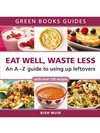

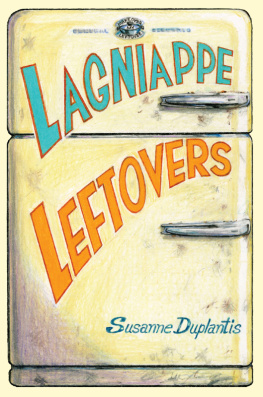
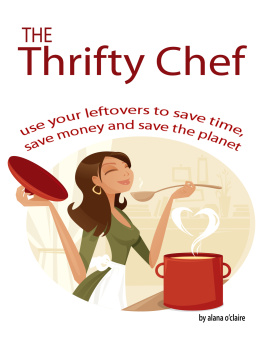

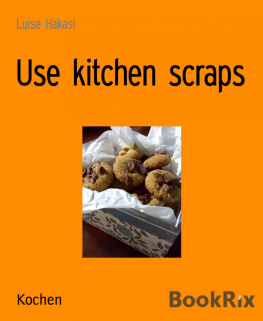
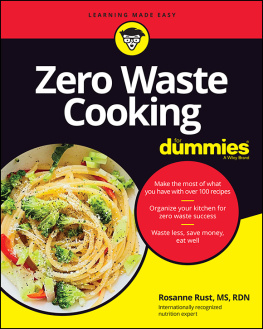
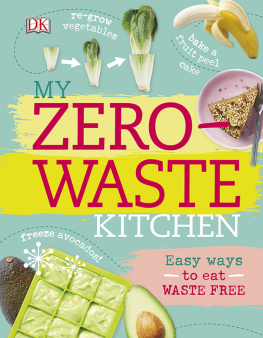

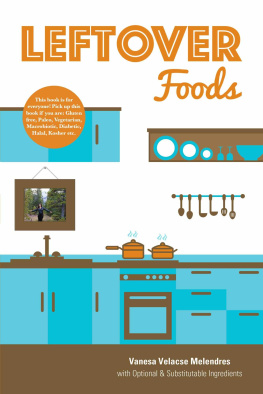
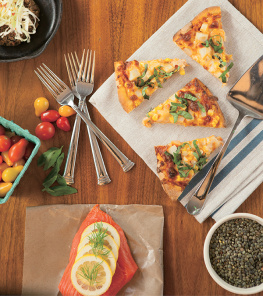
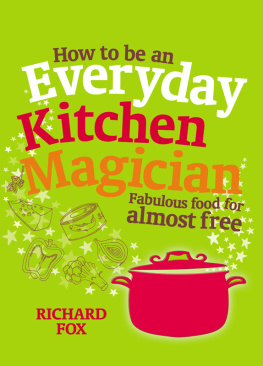
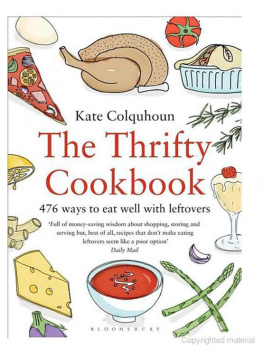


 First published in 2008 by
First published in 2008 by